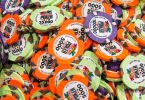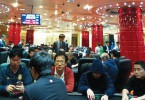Small pocket pairs. Some of the most common questions aspiring poker players ask revolve around these tricky yet potentially highly profitable hands. What’s the best way to play them? Should I raise or call? What do I do on the flop?

The truth is that there is no exact answer, but by following a few simpler rules they should become fairly straight-forward. The beauty of small pocket pairs is that, for the most part, they basically play themselves. Hit your set and it is party time, miss and most of the time you can just throw your cards into the much and wait for the next hand. So what do we classify as small pocket pairs? Basically all pairs from 2-2 through to 6-6 and possibly 7-7. Once we get to the middle pairs such 8-8 through J-J things get trickier, but for now we’ll stick to the small ones.
The value of small pocket pairs is basically all in their set value. Sure, there will be times in a tournament when you’re short-stacked and should shove with ANY pair, but when it comes to playing 100 big blinds deep you’re basically looking for that flopped set.
There are a few mathematical rules you need to be aware of when calling an opponent’s raise here and it is important that you pay close attention not only to your own stack size but also that of your opponent.
The odds of flopping a set are 7.5 to one, which means you will flop this monster hand roughly once every eight times you are dealt a pair of any sort. By this logic, you should call any time the effective stacks* are equal to or greater than eight times the amount it costs to call. That is, if you have to call $100 to see a flop but your opponent only has $700 behind them, you should fold instead. If they have $800 or more you can call and hope to hit a set.
BUT, this ignores the many times that you flop a set while your opponent misses altogether. Sets are wonderful because they give you a great opportunity to stack your opponent, but you also need to take into account the times this doesn’t happen.

As a result, it is widely accepted that effective stacks need to be around 20 times the amount you have to call to make it a mathematically sound play. So, if you have to call $100 to see the flop, both you and your opponent must have at least $2000 behind you to make this a profitable call in the long-term.
Of course, small pairs become far more profitable when you can find ways to win the hand when you don’t flop a set, but for the amateur player this requires a much longer discussion which we will save for a later date. Because small pairs either flop very well by flopping a set, or very poorly because most flops will have at least two over-cards, we can simplify our strategy to a “fit or fold” post flop scenario which will ensure we don’t get ourselves into too much trouble with these hands.
So if you’re still fine-tuning your poker game and want to stick to solid fundamentals, remember the “20 times” pre-flop rule and don’t feel bad about folding on most flops when you miss. This will ensure you can pop the Champagne corks when the dealer does indeed fan that magical card you’re looking for.
*Effective stacks refer to the size of your stack versus the size of your opponents. If you have 100 big blinds but your opponent in the hand has only 20 big blinds, the effective stack size is 20 because that is the maximum you can win from them in the hand.







